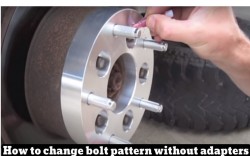Electric Vehicle Maintenance and Schedule Checklist
Here's something we don't see nearly enough of and that's an electric vehicle on a lift in a service shop. Cause electric cars require less maintenance than ICE car. Most people who own an electric vehicle seem to think EV generates zero emissions. It means zero maintenance well that's true in certain parts of the car, but not in all parts of the car. Let's look at the top five electric car maintenance needs and things that could lead to repair. We are gonna rank these in order of kind of how much they weigh on your overall ownership of the car.
1. Battery Care
Your electric car's main power comes from the battery and this is the heart of your car. Therefore its livability as well as your car's residual value. Whether you're leasing or buying it, this is the heart of the beast. So take care of it like you used to take care of an engine in your regular combustion car.
- Avoid overly hot/cold temp while parked
- Check owners manual for ideal charge temps
- Don’t allow the battery to fully “die”
- Don’t overcharge
- Don't charge in the direct sunlight
- Try to avoid over or undercharging
If you buy a used electronic vehicle, you will not know how the car battery was treated by the previous owner. You have to test the EV battery and if it is in bad condition then your battery may need to be replaced earlier than 200,000 miles.
2. Brake Service
Now we are talking about pads and rotors the friction parts, these are much more long-lived on an EV than a combustion car. Because most of your braking is done by the drag of regeneration when you lift off the accelerator. But it's gonna vary widely based on how many miles you drive. What style you drive, what terrain you drive in and over, and what regen settings you like to select on your EV. So we can't give you a tiny number of miles or number of months before you got to get the brakes done.
3. Coolant Service
Number three is the coolant in your electric car. That's right there's no engine but there's a cooling system which you need to care about. As on EV car have to deliver more power and it needs less frequent charges, for battery safety effective cooling system needs regular maintenance. You have to check coolant or antifreeze flushes when needed. Check the owner’s manual what type of coolant have to use for your EV and when to change. In Tesla Model 3 needs its coolant replaced every four years. Here 50,000 miles a Nissan Leaf though goes 125,000 miles and a Chevy bolt even longer 150K.
4. Brake Fluid
Brake fluid is susceptible to contamination from moisture and it should be replaced every few years to avoid damaging brake components even if electric cars do their braking via regeneration of the electromagnetic resistance. That puts the power back in the battery and that is true but not all the time depending on how you drive and where this is gonna be a system. You use quite a bit and you don't want it to be crapped out then change your brake fluid. On a Tesla Model 3 every two years or 25,000 miles and on a Chevy Volt every five years you have to change the brake fluid.

5. EV Software Updates
You can find in this EV the different things. You have to update your software when you are connected with WiFi and by this car will get new features automatically. Check for new software updates by opening the ‘Software’ tab on your touchscreen if there were any updates for your car you will get them very easily. By getting these updates please update your software immediately if you want it later you can reschedule it also. Almost all things gonna like as your mobile update via WiFi connections. Normally every company gave their EV software update along with their new features and there is the way of your EV usage successes.
6. Tire Rotation
Number six is tire rotation. We put this one down at the bottom because it's common to all cars even though you don't do it to yours. But on EV it remains important because they swap out their heavy transmission and engine for a heavy battery. Putting a lot of load on tires and also EV has killer torque able to really twist those tires hard if you get into it and that tends to shred tires as well. So you want to get maximum life by moving them around all four corners. Tesla says rotate Model 3 tires every 6250 miles, Chevy Volt and leaf every 7500 miles.
Except these, there are things to do with your EV as well.
Twice a year: Flush corrosive materials from the underbody using plain water.
Every 15,000 miles: Check the windshield wiper blades.If it shriek or film change it.
Every 36,000 miles: This should be replaced every 2 to 3 years, for special like a HEPA air filter you may be able to go up to 5 years between replacements.
Every 75,000 miles: Change the hood or body lift support gas struct
Every five years: You have to drain and fill the coolant service. Also have to replace brake fluid.
Every ten years: For EV charging station maintenance along with electric car service, also maintaining your car at-home EV charging station. A home charger can last for 10-plus years under ideal conditions.
Often now dealing with all those things is a lot easier and cleaner than dealing with tuneups and oil changes. But it's kind of a similar cognitive load EV's are easier to live with that doesn't mean they are maintenance-free.
Conclusion
Here's something we don't see nearly enough of and that's an electric vehicle on a lift in a service shop. Cause electric cars require less maintenance than ICE car. Most people who own an electric vehicle seem to think EV generates zero emissions. It means zero maintenance well that's true in certain parts of the car, but not in all parts of the car. Let's look at the top five electric car maintenance needs and things that could lead to repair. We are gonna rank these in order of kind of how much they weigh on your overall ownership of the car.
1. Battery Care
Your electric car's main power comes from the battery and this is the heart of your car. Therefore its livability as well as your car's residual value. Whether you're leasing or buying it, this is the heart of the beast. So take care of it like you used to take care of an engine in your regular combustion car.
- Avoid overly hot/cold temp while parked
- Check owners manual for ideal charge temps
- Don’t allow the battery to fully “die”
- Don’t overcharge
- Don't charge in the direct sunlight
- Try to avoid over or undercharging
If you buy a used electronic vehicle, you will not know how the car battery was treated by the previous owner. You have to test the EV battery and if it is in bad condition then your battery may need to be replaced earlier than 200,000 miles.
2. Brake Service
Now we are talking about pads and rotors the friction parts, these are much more long-lived on an EV than a combustion car. Because most of your braking is done by the drag of regeneration when you lift off the accelerator. But it's gonna vary widely based on how many miles you drive. What style you drive, what terrain you drive in and over, and what regen settings you like to select on your EV. So we can't give you a tiny number of miles or number of months before you got to get the brakes done.
3. Coolant Service
Number three is the coolant in your electric car. That's right there's no engine but there's a cooling system which you need to care about. As on EV car have to deliver more power and it needs less frequent charges, for battery safety effective cooling system needs regular maintenance. You have to check coolant or antifreeze flushes when needed. Check the owner’s manual what type of coolant have to use for your EV and when to change. In Tesla Model 3 needs its coolant replaced every four years. Here 50,000 miles a Nissan Leaf though goes 125,000 miles and a Chevy bolt even longer 150K.
4. Brake Fluid
Brake fluid is susceptible to contamination from moisture and it should be replaced every few years to avoid damaging brake components even if electric cars do their braking via regeneration of the electromagnetic resistance. That puts the power back in the battery and that is true but not all the time depending on how you drive and where this is gonna be a system. You use quite a bit and you don't want it to be crapped out then change your brake fluid. On a Tesla Model 3 every two years or 25,000 miles and on a Chevy Volt every five years you have to change the brake fluid.

5. EV Software Updates
You can find in this EV the different things. You have to update your software when you are connected with WiFi and by this car will get new features automatically. Check for new software updates by opening the ‘Software’ tab on your touchscreen if there were any updates for your car you will get them very easily. By getting these updates please update your software immediately if you want it later you can reschedule it also. Almost all things gonna like as your mobile update via WiFi connections. Normally every company gave their EV software update along with their new features and there is the way of your EV usage successes.
6. Tire Rotation
Number six is tire rotation. We put this one down at the bottom because it's common to all cars even though you don't do it to yours. But on EV it remains important because they swap out their heavy transmission and engine for a heavy battery. Putting a lot of load on tires and also EV has killer torque able to really twist those tires hard if you get into it and that tends to shred tires as well. So you want to get maximum life by moving them around all four corners. Tesla says rotate Model 3 tires every 6250 miles, Chevy Volt and leaf every 7500 miles.
Except these, there are things to do with your EV as well.
Twice a year: Flush corrosive materials from the underbody using plain water.
Every 15,000 miles: Check the windshield wiper blades.If it shriek or film change it.
Every 36,000 miles: This should be replaced every 2 to 3 years, for special like a HEPA air filter you may be able to go up to 5 years between replacements.
Every 75,000 miles: Change the hood or body lift support gas struct
Every five years: You have to drain and fill the coolant service. Also have to replace brake fluid.
Every ten years: For EV charging station maintenance along with electric car service, also maintaining your car at-home EV charging station. A home charger can last for 10-plus years under ideal conditions.
Often now dealing with all those things is a lot easier and cleaner than dealing with tuneups and oil changes. But it's kind of a similar cognitive load EV's are easier to live with that doesn't mean they are maintenance-free.




